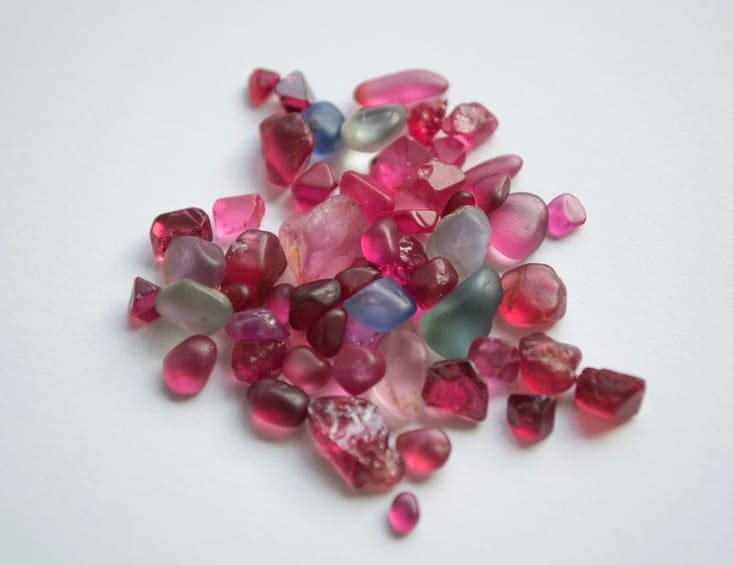
August’s Alternate Birthstone is the Spinel and is the newest addition to the Official Birthstone List.
Modifications to the list have only occurred during three separate years since its inception in 1912. Spinel’s addition to the list in 2016 is an inclusion we are wholeheartedly behind.
They are truly vivacious gems featuring a wide array of colors.
Spinel’s Special Meanings
- Spinel associates with the astrological signs of Sagittarius and Aries.
- Spinel is used to renew energy and encourage you to complete difficult tasks.
- Place the pertinent color spinel on your corresponding chakra to aid you in healing disorders of that area.
Spinel’s Rainbow of Colors
August’s Alternate Birthstone Spinel is a gem that colored stone enthusiasts adore. Brilliance and color range are two of the main factors that make heads turn.
Color Range
Spinels come in numerous shades of red, rose, pink, orange, orange-red, yellow, green, blue, lilac, purple, brown, gray, black and nearly colorless or white. The most valuable color being deep, vivid red. In addition, the pastel shades are stunning in almost all colors – deep purples, intense pinks with a hint of orange, and very rarely in cobalt blues.
Spinel can appear like the reds of ruby, the blues of sapphire, zircon, and topaz. The pinks of tourmaline, topaz, and morganite are similar to amethyst.
Spinel, What’s All The Confusion About?
Red is one of spinel’s most favored shades. In addition, they can be practically identical to a ruby. Most importantly, many famous rubies, especially in crown jewels, have in fact turned out to be red Spinel. Here are just two examples that “rocked” the world:
- the 170 ct. “Black Prince’s Ruby” in the Imperial State Crown from the British Crown Jewels
- the 352 ct. “Timur Ruby” owned by Queen Elizabeth.
Turns out, both of these outstanding rubies are actually red spinels!
Spinel is often times found in the same mines as ruby and sapphire (both corundum material). Therefore, many spinels were misidentified before more sophisticated gemology. Obviously, they look like ruby but have a different chemical makeup. Fine red Spinels are rarer and yet, they are more affordable because they are below the current market radar.
A dark red Spinel can also be mistaken for garnet. Or the lighter variety can look a lot like a red or pink tourmaline.
Then There’s Synthetic Spinel
Spinel has gotten a bad rap from the inexpensive synthetic form that has been used so commonly. Cheap to make, it has been used for decades as substitutes for diamonds and other gems in class rings and costume jewelry. Synthetic spinel is out there in abundance. So, please contact Copeland Jewelers, or another reputable jeweler when looking for gem quality natural spinel.
Tip: Colorless Spinel rarely occurs naturally in nature. Therefore, almost all colorless (diamond-like) Spinel is synthetic.
However, natural spinel is a rare, vibrant and gorgeous gemstone! They can be exquisite and have been used in jewelry since ancient times.
Unlike lower-grade rubies and sapphires that undergo extensive and invasive enhancements. Almost all of today’s natural spinel is untreated. It’s not necessary, spinel is a natural vivacious beauty! Plus, their more moderate prices and color range make them highly appreciated.
